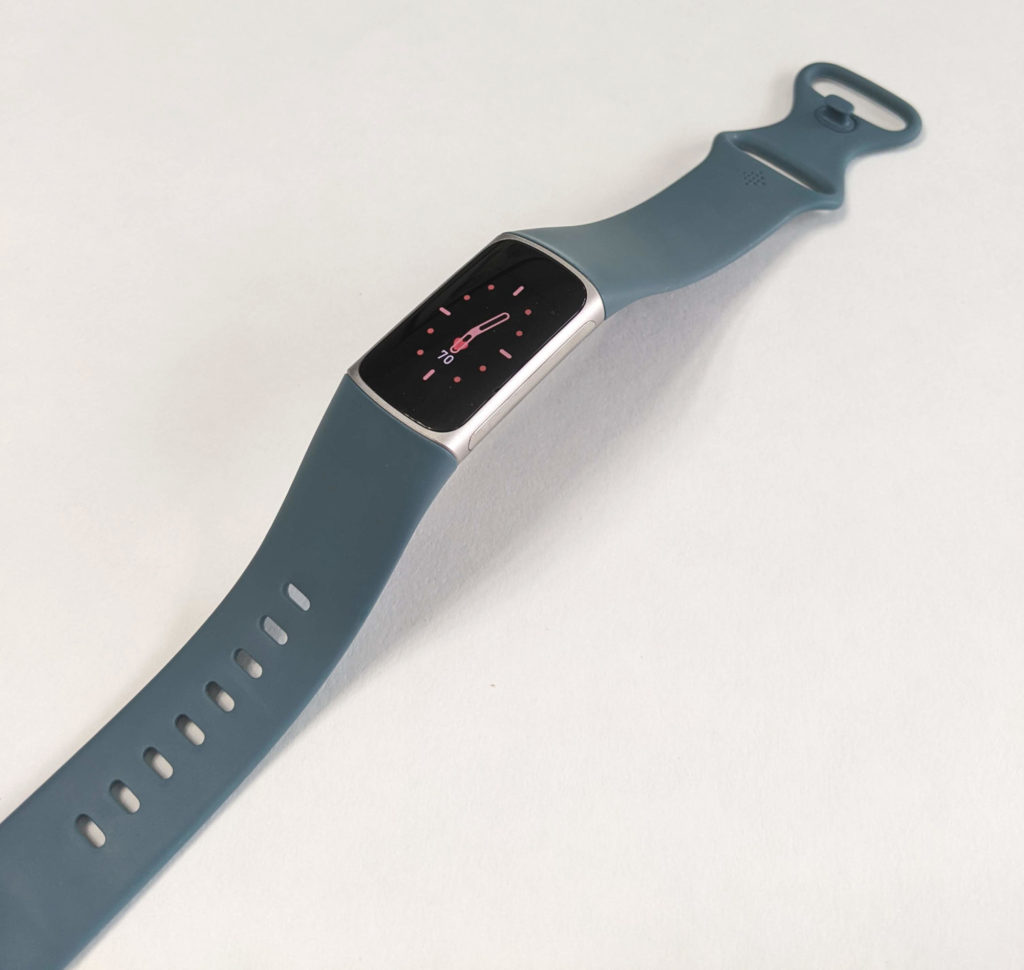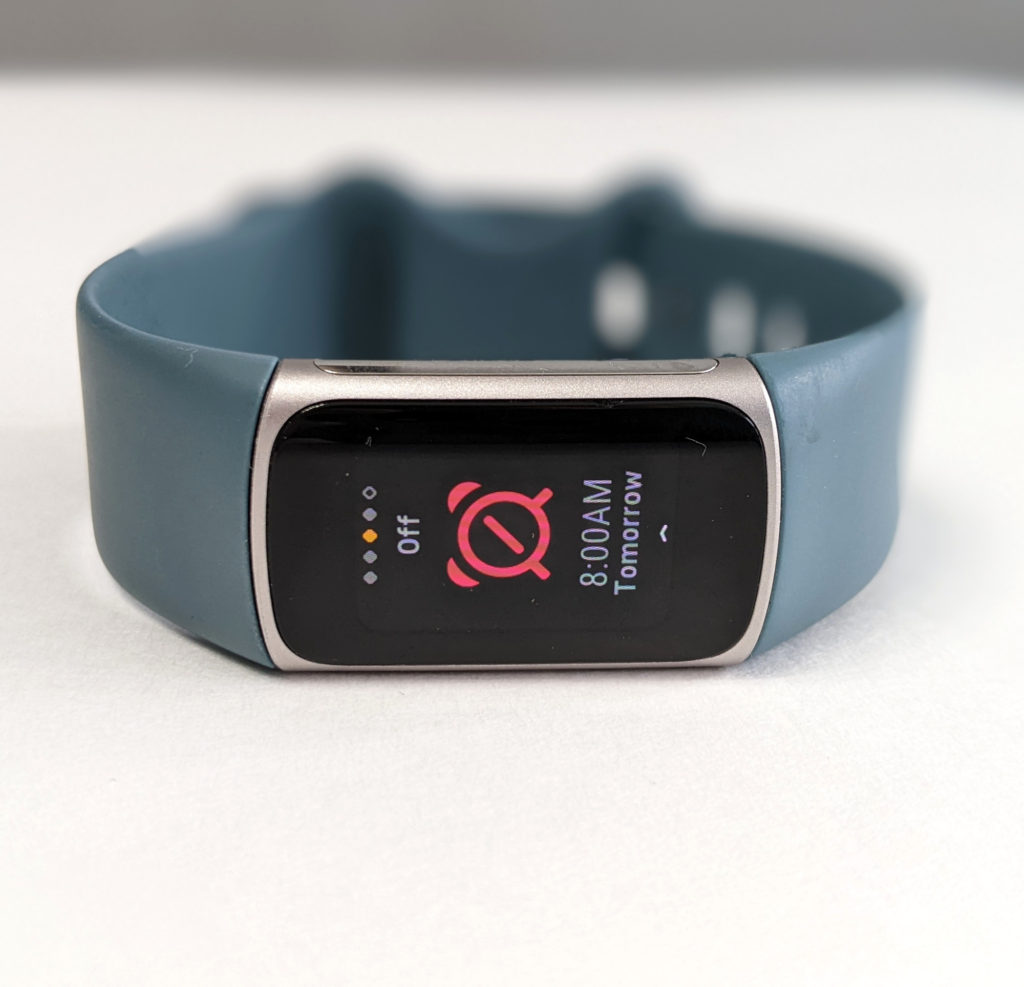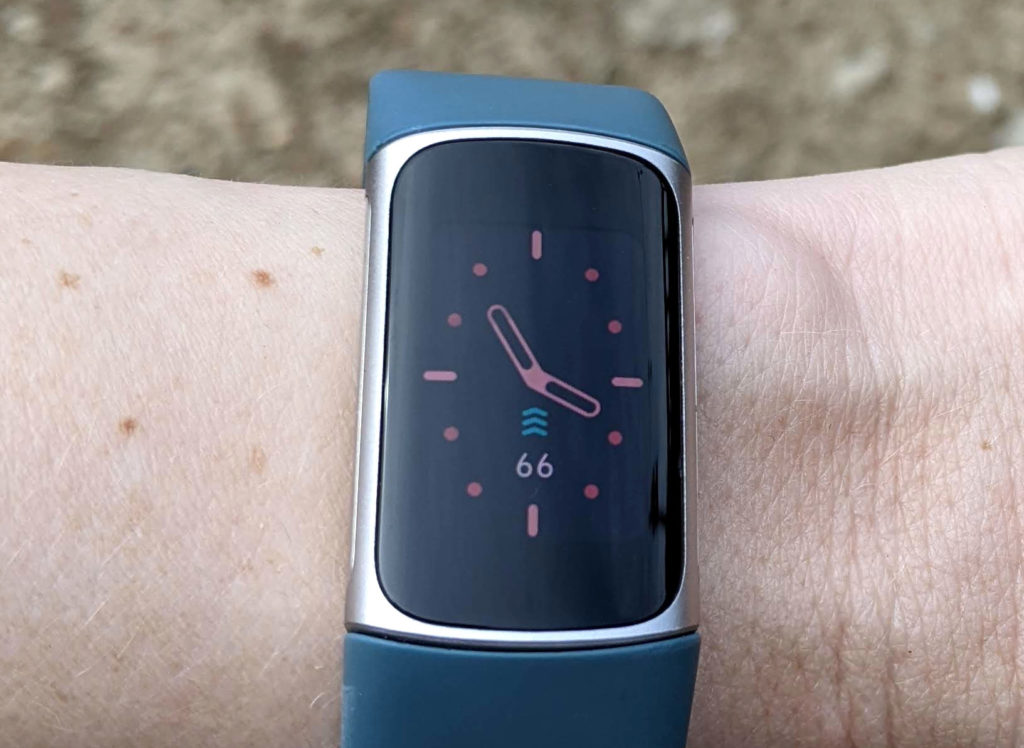
I love the simple pleasures in life: naps, chocolate, books, gardens. But you know what else I love? Gadgets! I love shiny technology, especially when it makes my life a little easier. That “making life easier” is what started me on my fitness tracker journey.
I’ve had smart step counters for about 8 years now, and I recently upgraded to the Fitbit Charge 5. It’s a great fitness tracker, but there are a few areas where Fitbit needs to improve.
Why a Fitness Tracker
When I first got a fitness tracker, my decision had little to do with health. My oldest kid had just started kindergarten, and I wanted a way to see call and text notifications while I was away from my phone in case the school nurse or a teacher called. Smartwatches and wearables were really just becoming a common item for consumers at that point, and a fitness tracker was the most affordable way to get the notification functionality that I wanted.
A tracker with notifications gave me the ability to attend a workout class or play with my toddler without worrying about missing urgent calls. Even today, I appreciate the freedom my Fitbit gives me to leave my phone in the other room.
Why Fitbit
Normally, I like going against the flow. I’m a fan of the underdog, and buying from a company with a near-monopoly on fitness trackers is not my usual M.O. However, after trying a few other brands, Fitbit is my first choice these days. Here’s why:
- Popularity: Wait a minute, didn’t I just say I don’t like going with the popular brand? Well, the popular brands are the ones with extra accessories available. When I tried a tracker from another brand, I discovered I was stuck with a plain, black band for the life of the product. With the Charge 5, there are a variety of options available from Fitbit as well as other companies.
- Size: I tried an AndroidWear watch a few years ago (the line is now known as Wear OS). And I hated it. The thing was huge. I didn’t need the extra functionality of a full smartwatch, so I felt like it just got in the way. I definitely prefer the smaller profile of Fitbit’s fitness trackers.
- Known Factor: With Fitbit, I know what I’m going to get. I’ve had friends try cheaper fitness trackers, and there’s definitely a learning curve. While the lower pricer point and customization options work well for them, I prefer an out-of-the-box experience that is easy and comfortable.

What I Like About the Fitbit Charge 5
The Charge 5 still has most of my favorite features from my old Fitbit Charge 3. It’s waterproof, so I can take it to the pool this summer. I can customize which apps send notifications to the tracker, which means I can decide whether I want to ignore emails that day.
For me, the major upgrade with the Charge 5 is its beautiful color screen. Like with previous Charge models, I can pick from a variety of face designs. I prefer one that looks like a traditional watch, but there are statistics-heavy options for folks who really want to focus on their fitness details. The screen brightness is key for me here in sunny Tennessee — I love that I can see time, stats, and notifications in the middle of a bright day.
I don’t consider myself a fitness tracker power user, so I like having features that are available when I need them without extra work. For example, the automatic heart rate monitoring gives me updates when I’m exercising, letting me know when I need to push a little harder or when I need to slow down. The Charge 5 also automatically tracks oxygen variations when I’m sleeping, which came in handy when I had COVID a couple of weeks ago.
The Charge 5 offers ECG heart rate monitoring and EDA stress detection, but I haven’t used those features in the few months that I’ve owned it. I do like that Charge 5 offers the option of passive heart rate monitoring to watch for signs of heart problems.

The Iffy Parts
Fitbit has access to a wealth of users’ fitness data and the analytics to go along with it. But unlike other devices with open source platforms, you’ll need to subscribe to Fitbit Premium ($9.99/month or $79.99/year) to access much of the information. The stats offered for free are enough for me, but I know some users are frustrated by the idea of paying extra for information that is already being collected.
Oddly enough, the Fitbit Charge 5 does not offer a weather screen, unlike previous models. I actually used this feature often, and I definitely miss it. I always find it puzzling when tech companies get rid of a popular feature that doesn’t seem to get in the way of anything else. Come on, Fitbit. I want my weather screen back!
I’m also curious to see the screen life for the Charge 5. After a couple of years of use, my Charge 3 screen was too dim to see in sunlight, which is why I needed to upgrade in the first place. I will say that the gorgeous screen means a slightly shorter battery life for the Charge 5. I need to charge it at least once a week, whereas my Charge 3 only needed to be plugged in every 10-14 days.
So is the Fitbit Charge 5 worth the upgrade? With a standard retail price of $150 (and a frequent sale price of $110-130), it’s hard to beat the functionality and convenience at that price point. Just be aware that the Charge 5 does not offer weather updates and is beholden to Fitbit’s Premium service for advanced statistics. But if you’re mainly wanting an easy way to get notifications while on the go, it’s a good buy.



I really liked your blog, there was a lot of information in it. I’m a blogger myself, so it would be great if you could check out my blog too.
https://dkmartofficial.com/fitbit-charge-6-vs-charge-5/
Here’s a comparison of the paragraph of Fitbit Charge 6 Vs Charge 5:
In the evolutionary tale of Fitbit’s Charge series, the Fitbit Charge 5 is a beacon of fitness innovation, seamlessly weaving health tracking into the fabric of everyday life. Now, imagine the Fitbit Charge 6 as the next chapter, pushing the boundaries of what a fitness tracker can achieve. Picture a device that not only tracks steps and heart rate but delves deeper into the realms of well-being. The Charge 6 could potentially introduce groundbreaking stress management features, offering users a comprehensive toolkit for mental and emotional resilience.
Visually, envision an aesthetic metamorphosis – a sleeker design with a more vibrant and interactive display, providing users with a dynamic canvas for their health insights. Customization reaches new heights, with a variety of bands and watch faces that transcend mere accessories, becoming expressions of individual style.
In this speculative narrative, the Charge 6 becomes not just a fitness tracker but a personalized wellness concierge. Advanced biometric sensors could offer deeper insights into sleep patterns, allowing users to optimize their rest for true recuperation. Smartwatch functionalities become more intuitive, with interactive notifications, potentially even incorporating forward-thinking features like augmented reality for immersive fitness experiences.
The choice between the Charge 6 and its predecessor, the Charge 5, becomes a voyage between the known and the anticipated, between a reliable fitness companion and a cutting-edge wellness ally. Fitbit, through this imagined progression, seeks not only to track health but to elevate the entire experience, ensuring that each beat, step, and moment is a harmonious symphony in the user’s wellness journey. To uncover the reality behind this speculation, exploration of Fitbit’s official channels is encouraged.